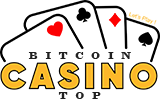When buying a piece of art or jewelry, you may be able to enjoy the item you purchase. You may either put them in your collection or resell them to increase your assets. With the spread of digitalization, people have started to think about implementing the same approach to virtual values. Blockchain development led to the emergence of such a concept as NFT.
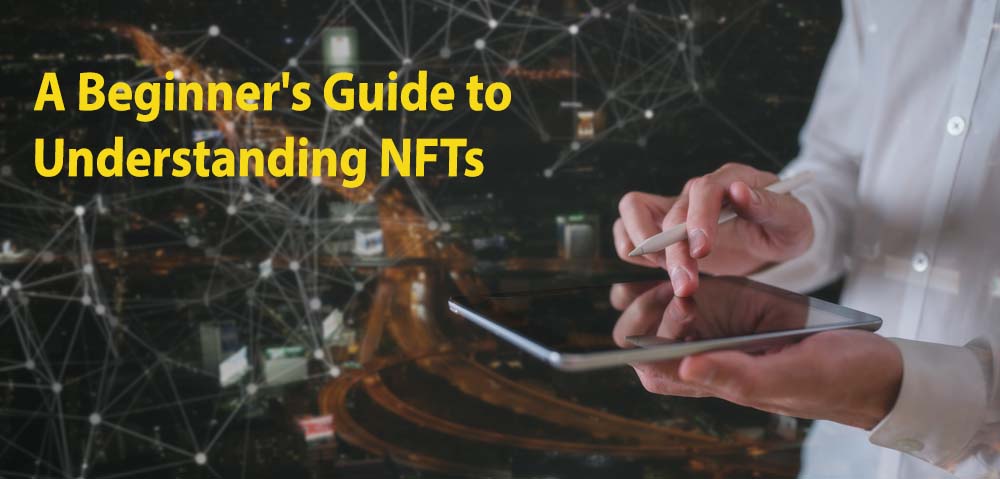
What is NFT in Simple Terms – All Your FAQs Answered
The non-fungible tokens, or NFTs, are a revolutionary concept that has caught the attention and interest of investors, technologists, and artists. This innovative idea has transformed the way we view value in our digital age. At a time when many artists were worried about AI interference with copyrights, NTF has created new opportunities for digital ownership, commerce, and art. NFTs open up new investment and creative avenues, for digital art and collectables, gaming items, metaverse tokens, and more up to virtual real estate.
Now is the best time to acknowledge ourselves with what exactly are NFTs, and how they work. This FAQ section will help you understand more about these digital assets.
Before reading this article, you might wondered: What does NFT stand for? Well, it stands for a non-fungible token. Yes, this term might sound super complex, but you’re not alone. At first, I had many questions about NFTs too, but I sorted them out and brought them to your attention.

FAQs
What is an NFT?
NFTs are cryptographic tokens represented on a blockchain. They come with verifiable proof of authenticity for digital or physical assets, as a unique certificate is stored in blockchain. Each unique token has specific metadata to establish clear ownership, and allow creators to monetize work. Blockchain technology also guarantees tokens immutability and security.
Unlike cryptocurrencies like Bitcoin, they have distinct characteristics and cannot be exchanged with each other. In addition, Non non-fungible tokens can be bought and sold online, often using cryptocurrency such as Ethereum.
Key Characteristics of NFTs
- Each NFT is one-of-a-kind. It has a unique identifier that distinguishes it from other tokens.
- The unique identifier on the blockchain, allows anyone to verify its ownership history and authenticity.
- The NFT cannot be broken down into smaller pieces. Either you own the whole token or none of it.
- Non-fungible tokens can be easily bought and sold in online marketplaces using cryptocurrency.
- They might grant access to exclusive content, in-game items, online community participation, or even project voting rights.
Opposite to ordinary digitalized art, artists can create, sell, and trade their works as NFTs allowing them to reach a global audience and earn royalties on secondary sales. The tokens also represent in-game assets such as characters, skins, and items players can own, trade, or sell. In addition, the tokens can be used to buy, sell, and trade virtual land and properties in online worlds and metaverse.
How Can I Buy NFTs
The value of a Non-Fungible Token can be estimated by considering several factors. They include the uniqueness of the item and creator’s reputation as well as community interest, media attention, liquidity, and reliability of the base blockchain platform.
Online NFT marketplaces such as OpenSea, Rarible, SuperRare, and Nifty Getaway, allow you to purchase a variety of digital assets. Different platforms offer different features and fees so do your research to find the one that best suits you.
The steps to buying NFTs include:
- Set up a crypto wallet;
- Buy cryptocurrency and transfer it to your wallet;
- Choose an NFT marketplace;
- Connect your wallet to the marketplace;
- Browse and find the NFT you want;
- Make sure you have enough funds for the purchase price and fees;
- Follow the marketplace’s instructions to complete the purchase;
- After purchasing, verify that the NFT appears in your digital wallet.
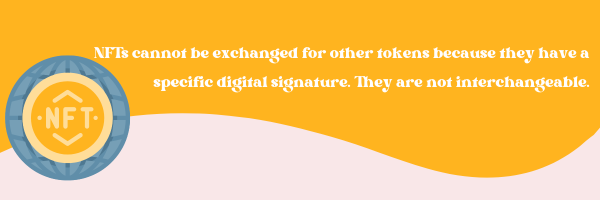
How to Sell NFTs
NFTs gain popularity because they are tradeable meaning they are easily sold and traded in NFT marketplaces. You may often increase your income by reselling these tokens.
There are a few important steps to selling NFTs:
- Usually owning tokens is linked to a crypto wallet still, there are some alternative ways to possess NFTs. Yet, to sell them you have to create a crypto wallet. Choose a reputable wallet such as Metamask, which is the most popular wallet for the Ethereum network. Regardless of which wallet you choose, ensure that it supports non-fungible tokens. Alternatively, you can use more secure hardware wallets or store them on a USB.
- Choose an NFT marketplace.
- Buy crypto coins to facilitate payment of fees.
- Connect your wallet to your chosen marketplace.
- Upload your digital work.
- Decide on your pricing structure. For instance, will you be selling your assets at auction or setting a fixed price?
- Create or Mint your NFT. Minting involves turning your digital file (art, music, video, etc.) into a unique digital asset on the blockchain. This involves
- Uploading the digital file you want to mint
- Adding a detailed description of your NFT
- Pay the listing fee with your cryptos upon creation of the NFT
- List your NFT for sale
- When you sell the NFT, confirm receipt of the buyer’s payment to you before releasing the NFT.
What are the Tips for Successful NFT Sales?
- Match your NFT type with the most suitable marketplace. Consider the platform’s audience, fees, and the kind of NFTs they typically feature.
- Ensure your digital asset is of high quality and unique
- Highlight the rarity and uniqueness of your digital asset to attract collectors
- Research similar NFTs to determine a fair price or starting point for auctions.
- Promote your NFT listing on social media platforms like Twitter, Instagram, or relevant communities.
- Align your NFT with current interests to attract a buying audience.
- Engage with your audience and potential buyers regularly.
Remember, the NFT market is still young and evolving. So, there’s no guaranteed formula for success. Therefore, stay informed and keep adapting your strategies.
How to Create an NFT
Although it is complex in its essence, the creation of an NTF does not require advanced technical knowledge. To begin, you need a digital asset that you want to tokenize. You can proceed with digital art, music, video, virtual objects, or other digital content. You’ll also need a crypto wallet to store your NFT and pay small fees for the process.
As a creator, you will use blockchain networks to convert your asset into a token. Upload your file on the NFT marketplace, along with details such as a name, detailed description and price. The marketplace will create a unique token on the blockchain that proves your ownership. The process requires a small payment in order to make your digital assets available on a marketplace.
How to Transfer NFTs to Another Wallet
When you sell your unique digital assets you must then transfer them to your buyers. To achieve this, you will need to:
- Log into your digital wallet and locate the NFT tab;
- Select the NFT that you wish to transfer by clicking on its tab;
- Click Next or Send;
- Enter the recipient’s wallet and double-check that it is correct.
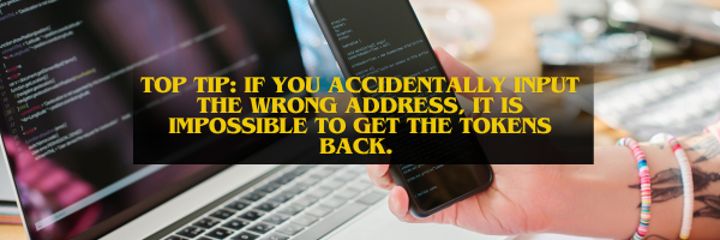
What is the NFT Ecosystem?
The NFT Ecosystem is the network that combines platforms, technologies and participants who support the creation, purchase, sale and use of Non-Fungible Tokens. The NFT ecosystem consists of five main components:
- Blockchain technology is the backbone of the NFT ecosystem. Blockchain uses smart contracts that are required to create, sell, and buy non-fungible tokens. Ethereum is the most common blockchain for NFTs. It ensures immutability, security and transparency.
- NFT Marketplaces are digital marketplaces where you can mint, display and sell digital assets. You can use this platform to tokenize your work, find your audience and sell them. Some popular marketplaces include OpenSea, Mintable, and Rarible.
- Crypto Wallets are vital for trading, transferring, and managing NFTs and accepting payment in cryptocurrencies. These wallets act as safe places to store any crypto assets.
- Minting platforms. To create NFTs, you need to have access to one of the minting platforms. Mintbase and Mintable are examples of those platforms; they allow you to tokenize your assets, attach metadata and establish ownership in the blockchain.
- Decentralized Autonomous Organizations or DAOs are governed by the community and operate on blockchain technology. They use native tokens as well as smart contracts to manage. You can be involved in NFT-related projects, make decisions and vote according to how many tokens you hold. Collector DAOs are used to collect money for NFTs.
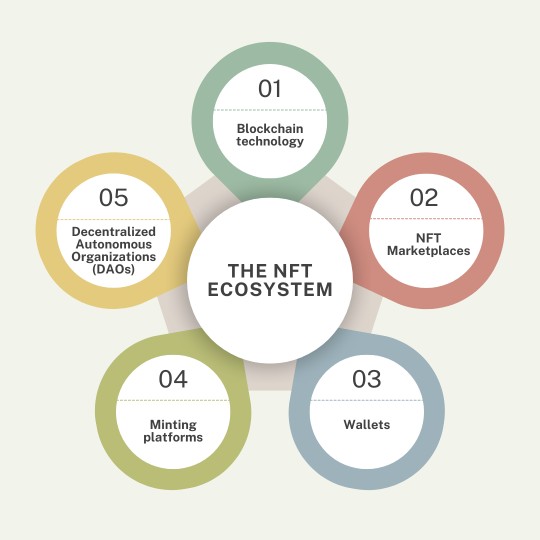
What is an NFT Trading Card?
It is a digital trading card similar to traditional trading cards but with the authenticity and ownership verified via blockchain. It is a type of digital collectible. NFT Trading Cards usually feature game characters, sports figures or historical games. Some of them offer in-game features, while others serve as exclusive memberships, giving access to special events and content.
The cards can be bought or sold on NFT’s marketplaces and stored in crypto-wallets. Blockchain technology ensures each NFT card’s authenticity. This eliminates concern over counterfeiting, which is often a problem with physical cards.
What is NFT Art?
NFT is a form of digital art. Images have to be tokenized, and they can be bought or sold over blockchains. Digital artists are embracing NFT art as it offers a great opportunity to the industry. The Digital art tokens allow the artists not only to sell their creations but earn royalties as well. NFTs have the added benefit of being secure and immutable. Also, trading volume, liquidity, and price affect the ease of buying or selling an NFT. Previous sales data can also be used to gauge future value.
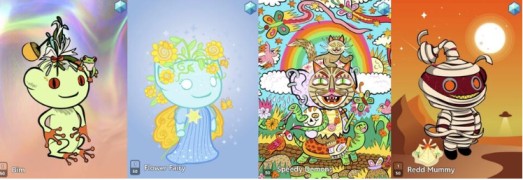
What is the Most Expensive NFT in History?
The Merge token is known to be the most expensive NFT in history, with a selling price of $91.8 million. With around 28,000 owners, it was created by an unknown person or people named ‘Puk’. It was put on sale in units for 48 hours in December 2021, and during the sale, 28,893 buyers scooped up 312,686 units. The supply of the coin decreases as time goes by, meaning its value keeps increasing.
How Do I Know my NFT is Authentic?
NFTs are recorded on an open-source blockchain, and the ledger’s transparency means anyone can verify ownership and authenticity.
To verify the authenticity of your unique digital asset:
- Check the blockchain verification
- Check the creator’s profile, social media links and previous works to ensure they are legitimate.
- Scrutinize the NFT Metadata, which includes name, description, properties, and the creator’s details.
- Use blockchain explorers to trace the NFT’s origin and ownership.
- Use Third-Party Verification Services such as Verisart, which certifies digital art and NFTs.
- Most importantly, purchase Non-fungible tokens from well-known and reputable marketplaces.
In Closing
Non-fungible Tokens are unique digital identifiers that are recorded on a Blockchain. These tokens are a major step forward for digital ownership. They offer creators a new way to monetize their work and collectors the opportunity to own unique, verifiable assets. NFTs have a wide range of applications as the technology develops and is integrated into various industries. The rapid growth of NFTs is generating both excitement and skepticism. However, it’s clear that NFTs are not just a passing fad. As with any new technology, it’s important to look at NFTs critically and understand their potential as well as their challenges. These FAQs should have helped you to understand Non-Fungible Tokens, including what they are, their uses, and the way they have changed our perception of Blockchain-based assets.
